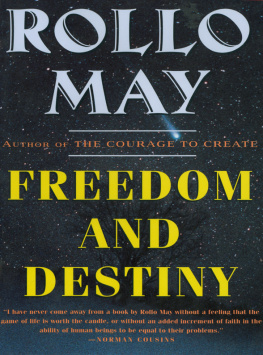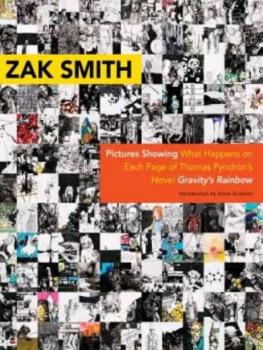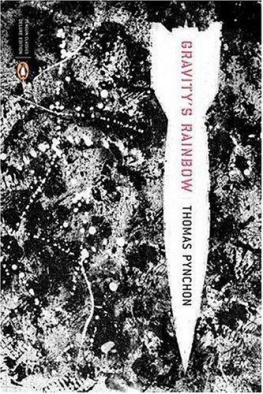Gravitys Rainbow, Domination, and Freedom

Gravitys Rainbow, Domination, and Freedom
Luc Herman and Steven Weisenburger

2013 by the University of Georgia Press
Athens, Georgia 30602
www.ugapress.org
All rights reserved
Set in Sabon and Futura by Graphic Composition, Inc.
Printed digitally
Library of Congress Cataloging-in-Publication Data
Herman, Luc.
Gravitys Rainbow, domination, and freedom / Luc Herman and Steven Weisenburger.
pages cm
Includes bibliographical references and index.
ISBN 978-0-8203-3508-7 (hardcover : alk. paper)
ISBN 0-8203-3508-8 (hardcover : alk. paper)
ISBN 978-0-8203-4595-6 (pbk. : alk. paper)
ISBN 0-8203-4595-4 (pbk. : alk. paper)
1. Pynchon, Thomas. Gravitys rainbow. I. Weisenburger, Steven. II. Title.
ps3566.y55g73455 2013
813'.54dc23 2013015147
British Library Cataloging-in-Publication Data available
ISBN for digital edition: 978-0-8203-4655-7
Contents
Acknowledgments
The concept and argument for this book took shape during our joint 2009 fellowship at the Flemish Academic Centre for Science and the Arts in Brussels. Without the centers generous support and collegial environment, no amount of transatlantic emailing or Skype calling would have gotten us here. At the center, Marc Demay, Inez Dua, and Chris Bross provided thoughtful and kind encouragement and assistanceand daily coffee! Also in Brussels, at the Royal Librarys Center for American Studies, Myriam Lodeweyckx provided access to and guidance through the centers holdings. Southern Methodist University provided a research leave, enabling Steves residency at the Royal Academy, while the Jacob and Frances Mossiker Trust funded his travel to Europe and to American special collections libraries, without which we also would not have gotten the book done.
At the University of Texas, librarians at the Harry Ransom Center assisted our research in the Thomas Pynchon Collection and in their archived sixties-era underground press materials. Sue Hodson, curator at the Huntington Library in San Marino, California, assisted us during several visits for work with the Stephen Michael Tomaske Collection of Pynchon-related materials; Luc, in particular, is grateful for the Huntington fellowship that enabled his stay in April 2011. Staff at the University of Californias Bancroft Library assisted our research in their archive of sixties-era small press and free speech movement materials.
Portions of this book were adapted from previously published essays in Texas Studies in Literature and Language (34.1, 1992), Pynchon Notes (3435, 1994; and 5657, 2009); and Revista di Studi Anglo-Americani 8.10 (1994), and from the commemorative collection Sans Everything (2004). Other portions were field-tested before savvy audiences at the University of Antwerp and at International Pynchon Week conferences, and we are grateful for their questions and suggestions.
Editor Nancy Grayson of the University of Georgia Press helped get this book under contract in 2009, then waited patiently until we delivered the manuscript three years lateras she stood on the threshold of retirement. We owe Nancy great thanks, and trust that her travels are going splendidly. For their expert peer reviews of our manuscript, we are especially grateful to David Cowart and John Krafft, who provided detailed suggestions and useful critiques. John, for decades the dean of Pynchon studies, provided what may well be the greatest epic in the history of readers reportsclosely incisive and expansive in its corrections and critiqueand David, also a long-time Pynchon and contemporary literature scholar, offered useful advice that helped us sharpen the books argument at key points. Many thanks to both. We are also very grateful for the help of photographer Debora Hunter, who assisted with several of our images.
Gravitys Rainbow, Domination, and Freedom

Rue Rossini in Nice, France. Photo by Steven Weisenburger, 2012.
Whats Free? (An Introduction)
His first free morning. He doesnt have to go back. Free? Whats free?
Gravitys Rainbow
When our main character ponders liberty one-third of the way into Thomas Pynchons great novel, Tyrone Slothrop doesnt ask who is free or what freedom is. Rather, he asks himself: What does the word free mean? He asks: Does any thing, any being under the sun, exist any more in a free condition? At that moment in a rented room on the Rue Rossini in Nice, he is an absent-without-leave American lieutenant, fleeing superiors who have employed and manipulated his mind and body in uniquely dominating ways. Outside his room, the world war still ravages Europe in early 1945; if captured, he could lose his liberty or his life for desertion. Slothrop therefore has profoundly compelling reasons to ask his questions. But in the next sentence he falls asleep. Our antihero characteristically lapses into the deadly sin of sloth specified in his patronymic. Deadly because the act of being careless or indifferent, what the church names acedia, severs access to whatever grace it is, Gods or Natures, that is presently giving Slothrop access to a new life and an appreciation of his free will, the issue attending seemingly every point in his lifes trajectory so far, and the issue which he abandons to sleep.
In the snarled plot of Gravitys Rainbow, Slothrop has just fled Monaco and Allied intelligence officers who, having contrived his Hollywood-style cute meet and libidinous captivity with a lovely Dutch woman in their control, then cut off his easy escape by stealing Slothrops uniform and identity papers.pleasing stuff to condition experimentally baby Tyrones erectile reflex in a psych-lab experiment. Still worse, in exchange for such grossly unethical uses of a human subject, Jamfs lab had compensated the childs father, Broderick Slothrop (later dubbed Pernicious Pop), with a contract ensuring that Harvard University would give a free ride to Infant Tyrone. Reading the documentary evidence at age twenty-seven in 1945, Slothrop recognizes that all he has experienced in his life as exercises of free will may in fact have been subject to apparatuses of surveillance, manipulation, and domination and, furthermore, that this chain presently binding his deepest memoriesnot indeed to pleasure but to fear and traumamight also account for a recent and most uncanny symptomatology that had put him squarely on Their radars. Those v-2 rockets that began raining down on greater London in September 1944 seemed to strike the very sites where the lusty lieutenant had previously recorded his every sexual conquest of young Englishwomen, assigning to each her own colored star, pasted on a city map tacked to a beaverboard wall in the bureaucratic warren where Slothrop worked. Was the map accurate or a figment of his imagination? No matter: for military authorities and managers, soon made aware of the mystery, interpret each blast as another node in a serial unfolding of coitus and dying so consistent as to defy statisticians probabilistic analyses and to beg instead for deterministic reasoning, for a causal order, or plotting, to explain the enigmaand to rationalize the enigma-within-the-enigma: for those authorities also conceived the apparent reversal or negation of cause and effect manifested on Slothrops map as a phenomenon mimicked, or mocked, by how the v-2 travels faster than sound, its screaming uncannily
Next page












